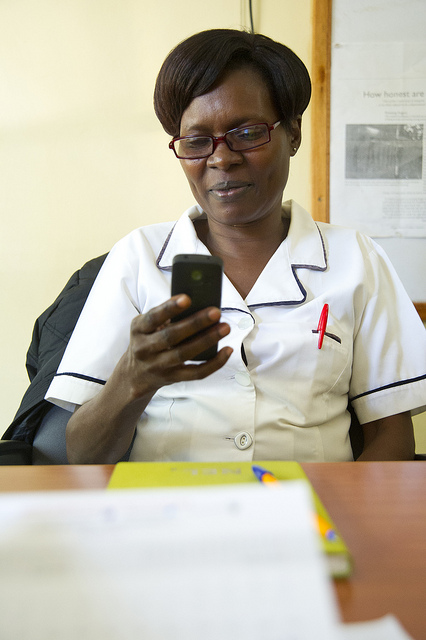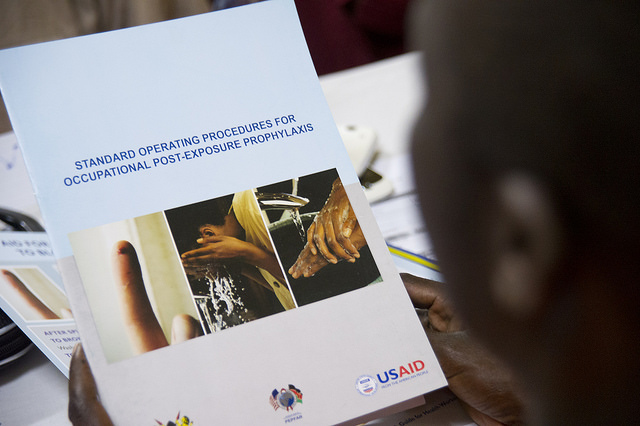 For a trainer in mid-session, phones in the classroom are often more of an unwelcome distraction than a learning tool. For nurse Benta Oriaro, they are essential to the training she is offering today in Kisumu, Western Kenya.
For a trainer in mid-session, phones in the classroom are often more of an unwelcome distraction than a learning tool. For nurse Benta Oriaro, they are essential to the training she is offering today in Kisumu, Western Kenya.
“We have tools that we work with, and so we enlighten health care workers about those,” Oriaro said. “Now the latest tool that was introduced was the mobile application.”
Thanks in part to initiatives like the Mobile Post Exposure Prophylaxis, (mPEP), launched in 2013 by the non-profit organization mHealth, phones are playing an increasingly vital role in Kenya’s health care system. mHealth is working on a variety of mobile technology initiatives to streamline Kenya’s healthcare system. In the case of mPEP, that means providing an easy and regular follow-up system for health care workers potentially exposed to HIV through work accidents.
Once exposed to potentially tainted blood, say by an accidental needle stick, health workers are at serious risk, says Oriaro.
“The risk is higher from accidental exposure as compared to sex,” Oriaro said. “You are working with a higher at-risk population.”
Per the existing protocol, exposed workers first wash the wound, then report the incident immediately to a supervisor who logs the incident in a logbook. Then, the health worker begins a six-month period of antiretroviral therapy (ARV) medications, testing, and follow-up to ensure they do not contract the virus—a laborious and time-intensive process for supervisors tasked with following up on an infected health worker’s care. Molly Oloo, Senior Nursing Officer at Kisumu East District Hospital, says it is a treatment process made more difficult by the fear and stigma of HIV that persists in Kenya.
“Even though these are health care workers, there is still an element of denial,” Oloo said. “There is still a stigma, too, so the messages are repeated to remind them that they need to go for treatment.”
Through the mPEP system, health professionals who register receive text messages on their personal cell phones, reminding them of upcoming tests and encouraging them to follow their ARV treatment during the first 28 days following exposure. It may seem like a simple system, says Oriaro, but the system offers an added advantage as well.
“They receive the messages on their personal phone, and we are able also to receive the same messages,” Oriaro said. “So if the person doesn’t come for care, we can follow up.”

“Initially people were reluctant to report incidents,” Oloo said. “But now people are reporting more willingly, and we attribute that to education. ”Through that personal follow-up, caregivers are often able to persuade exposed workers to rejoin the treatment program—a critical step in helping to reduce their chances of becoming infected, which is the main goal of the mPEP initiative. As one of 61 hospitals currently enrolled in the mPEP initiative, Kisumu East incorporates weekly reminders into their staff meetings on the importance of the system to occupational health, reminders they see are making a difference.
Much of that education starts in trainings like the one hosted by Oriaro. Back at the training she is hosting today–this one for County AIDS and Sexually Transmitted Infections Control Officers–she is relaxed and confident before the group, introducing the idea of the mPEP initiative and how it can be helpful to anyone who may be exposed to HIV. For her, Oriaro says, it is a work of passion.
“I love teaching and giving information if I have it,” Oriaro said. “I’m proud if we reduce the number of infections through education.”